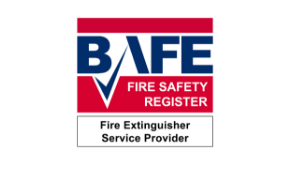Fire detection and life safety specialist CDS has welcomed the Building Safety Bill aimed at protecting residents in high rise buildings in the wake of the Grenfell fire.
The 218-page bill, introduced to parliament this summer and due to become law later this year, is aimed at transforming the way tall residential buildings are designed, constructed and managed to ensure the safety of those living there.
Those failing to comply with the new legislation are likely to face criminal charges.
A key part of the bill is focused on fire safety, with reforms to the existing Fire Safety Order due to come into force six to 12 months after it receives royal assent. This will include a requirement for fire risk assessments to be recorded for each building and improve how fire safety information is handed over throughout its lifetime.
The reforms will see new requirements placed on a building’s ‘responsible person’, usually the building owner or, in the case of social landlords, a team of people, who will be obliged to preserve and make available appropriate fire information for residents over the building’s lifetime.
They will be required to manage safety risks, with clear lines of responsibility for safety during design, construction, completion and occupation of high-rise buildings.
The reform will also put greater emphasis on the responsible person ensuring that the professional carrying out fire risk assessments is ‘competent,’ with tougher fines for those breaching the order.
The new measures will also make it easier to identify who is responsible for fire safety, with anyone impersonating or obstructing a fire inspector facing unlimited fines.
The ‘responsible persons’ will need to ensure that their fire risk assessments include the fire safety risks and, where appropriate, any general fire precautions.
CDS managing director Simon Abley said: “Any legislation aimed at protecting people’s personal safety must be welcomed. This bill has been designed to overhaul the safety at all stages of a building’s life – from design to occupation and throughout its tenure.
“There is to be a transparent chain of command enabling residents to see and be able to access those responsible for their safety. The regulations, once in force, will give greater clarity to what has been a grey area for too long and should help residents feel more confident that they can be safe from fire, and have the means to escape should one arise.
“Carrying out a fire risk assessment is already a complex process, and these regulatory changes will make it more so. While there is currently no legal requirement for them to be carried out by an expert, the likelihood of missing something crucial, the obligation to use a ‘competent’ person and now the added threat of fines, suggests it would make sense to instruct an independent, appropriately qualified specialist.”
Fire risk assessments are a legal requirement for all non-domestic premises, as well as for the communal areas of residential buildings such as blocks of flats and sheltered housing complexes.
CDS has more than 30 years’ experience of providing such assessments to an extensive client base including universities, schools, hospitals, care homes, councils, police authorities, social housing providers, student accommodation, hotel chains, warehouses, distribution centres, factories and airports.


















